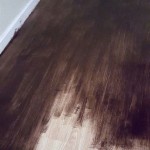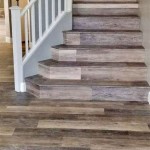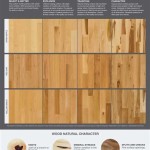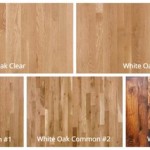Cost to Put Down Engineered Hardwood Flooring: A Comprehensive Guide
Engineered hardwood flooring has become a popular choice for homeowners seeking the aesthetic appeal of solid hardwood but with greater versatility and stability. Its layered construction makes it less susceptible to moisture and temperature fluctuations compared to its solid counterpart, allowing installation in a wider range of environments, including basements and kitchens. However, understanding the cost involved in putting down engineered hardwood is crucial for budgeting and planning any flooring project.
Several factors influence the overall cost of installing engineered hardwood flooring. These include the type of engineered hardwood selected, the subfloor condition, the installation method employed, and the labor costs in the specific geographic location. A detailed examination of these factors is necessary for an accurate cost estimation.
Material Costs: Engineered Hardwood Variety and Quality
The price of engineered hardwood flooring varies substantially depending on the species of wood, the thickness of the veneer layer (the top layer of real wood), the width and length of the planks, the finish, and the overall quality. Common wood species like oak and maple tend to be less expensive than exotic species such as Brazilian cherry or walnut. The veneer layer, also known as the wear layer, directly impacts the durability and longevity of the flooring. Thicker veneers allow for more refinishing throughout the floor's lifespan, increasing its value but also its initial cost.
Engineered hardwood flooring is typically sold by the square foot. Prices can range from $3 to $15 or more per square foot, excluding installation. Lower-end options often feature thinner veneers and narrower planks, while higher-end options boast thicker veneers, wider planks, and more sophisticated finishes. Plank width and length also significantly affect the look of the floor. Wider and longer planks generally create a more luxurious and spacious feel, but they often come at a premium. Therefore, careful consideration of these material attributes is crucial when determining the overall cost of the project.
Furthermore, the finish applied to the engineered hardwood can also influence the price. Factory-finished options tend to be more expensive than unfinished options, but they offer greater convenience and consistency in appearance. Factory finishes also often include multiple layers of protective coating, enhancing the floor's resistance to scratches, stains, and wear. Unfinished engineered hardwood allows for customization of the stain and finish, but requires additional labor and materials, which can offset the potential cost savings.
Labor Costs: Installation Method and Complexity
Installation costs for engineered hardwood are heavily influenced by the chosen installation method and the complexity of the installation process. The three primary installation methods are: nail-down, glue-down, and floating. Each method has its own associated labor costs and suitability for different subfloor types.
The nail-down method is generally used over wooden subfloors. It involves securing the engineered hardwood planks directly to the subfloor using nails or staples. This method requires specialized tools and expertise, resulting in higher labor costs compared to other methods. The glue-down method involves adhering the planks directly to the subfloor using a specialized adhesive. This method also requires a smooth, level subfloor and skilled labor to ensure proper adhesion and prevent air pockets. Labor costs for the glue-down method are typically comparable to the nail-down method.
The floating method is a popular choice for its ease of installation and versatility. It involves interlocking the planks together to create a "floating" floor that is not directly attached to the subfloor. This method can be used over a variety of subfloor types, including concrete and existing flooring. While the floating method is generally less expensive to install than the nail-down or glue-down methods, it still requires careful preparation of the subfloor and precise installation to ensure a stable and even surface. The method is also suitable for DIY projects, but professional installation is always recommended for optimal results and to protect any manufacturers' warranties.
The complexity of the installation also plays a significant role in labor costs. Rooms with intricate layouts, such as those with curved walls or multiple doorways, will require more time and effort to install, increasing labor costs. Additionally, the presence of obstacles, such as pipes or stairs, can also add to the complexity and cost of the installation. The location of the installation also affects labor costs. Major metropolitan areas usually have higher labor rates than rural areas because of increased demand and higher cost of living.
It is crucial to obtain multiple quotes from qualified flooring contractors to accurately assess labor costs. These quotes should include a detailed breakdown of the services provided, including subfloor preparation, material delivery, installation, and cleanup. It is also essential to verify the contractor's licensing, insurance, and experience before hiring them.
Subfloor Preparation: Addressing Underlying Issues
The condition of the subfloor is a critical factor that can significantly impact the cost of installing engineered hardwood flooring. A smooth, level, and dry subfloor is essential for a successful and long-lasting installation. If the subfloor is uneven, damaged, or contaminated with moisture, it will need to be repaired or replaced before the new flooring can be installed. This can add substantially to the overall cost of the project.
Subfloor preparation may involve several steps, including leveling, patching, and cleaning. Leveling the subfloor is crucial to ensure that the engineered hardwood planks are installed on a flat and even surface. This can be achieved by applying a self-leveling compound or by grinding down high spots. Patching involves filling cracks, holes, and other imperfections in the subfloor. This can be done using a patching compound or by replacing damaged sections of the subfloor.
Cleaning the subfloor is also essential to remove any dirt, dust, and debris that could interfere with the adhesion of the flooring or create an uneven surface. This can be done by sweeping, vacuuming, and/or scrubbing the subfloor. In some cases, it may also be necessary to apply a primer or sealant to the subfloor to improve adhesion and prevent moisture penetration.
Moisture is a major concern when installing engineered hardwood flooring, particularly over concrete subfloors. Excess moisture can cause the flooring to warp, buckle, or delaminate. A moisture test should be conducted to determine the moisture content of the subfloor. If the moisture level is too high, it will need to be addressed before installing the flooring. This may involve installing a moisture barrier or allowing the subfloor to dry out completely.
The cost of subfloor preparation can vary widely depending on the extent of the work required. Minor repairs, such as patching small cracks, may cost only a few hundred dollars. However, extensive repairs, such as leveling an uneven subfloor or replacing damaged sections, could cost several thousand dollars. It is essential to have the subfloor thoroughly inspected by a qualified flooring contractor to accurately assess the necessary preparation work and associated costs. Ignoring subfloor issues can lead to costly problems down the road, so it is worth investing in proper preparation upfront.
Additional costs may arise from the removal and disposal of existing flooring. The effort required to remove the existing flooring varies, directly impacting the cost. For instance, removing carpet is quicker and simpler than removing ceramic tile that requires specialized tools and more labor involvement.
Baseboards and moldings also contribute to the overall project cost. After flooring installation, baseboards and moldings are often reinstalled or replaced to provide a finished aesthetic. The price of these materials and their installation should be factored into the overall budget.
In summary, the cost to put down engineered hardwood flooring is influenced by a complex interplay of factors, including material selection, installation method, and subfloor condition. Careful planning, thorough research, and professional consultation are essential for achieving a successful and cost-effective flooring project.

How Much Does It Cost To Install Engineered Hardwood Floors Floorings

Average Hardwood Flooring S In 2024 Forbes Home

Cost To Remove Hardwood Floors Mk Remodeling

How Much Does It Cost To Install Hardwood Flooring Inc

How Much Does Hardwood Flooring Cost 2024 Guide

How Much Does It Cost To Install Hardwood Floors Homeserve Usa

Flooring Installation Cost 2024 Guide Modernize

Here S How Much Hardwood Flooring Costs In 2024 Angi

How Much Does Flooring Installation Cost 2024 Guide

How Much Hardwood Flooring Costs And To Save








